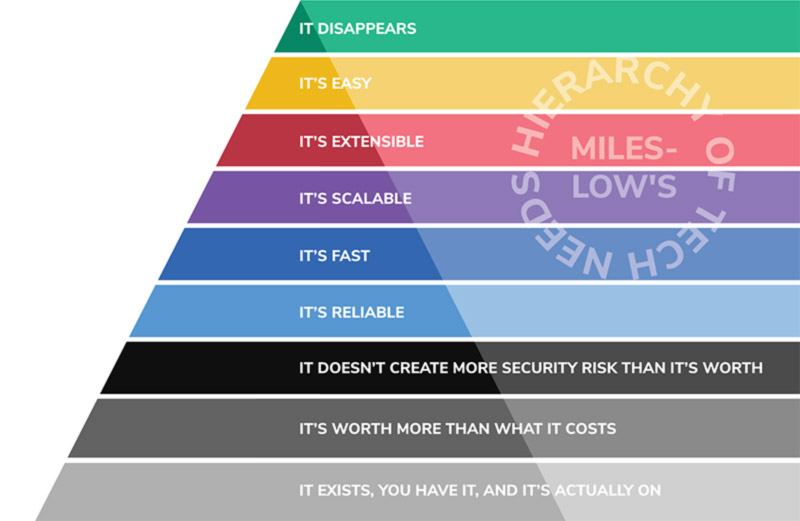I’ve spoken to analysts, engineering leads, technology officers, cloud architects, and finops actuaries; everyone seems aligned on one point: that at the end of the day, this multi-cloud thing is not a good idea. It’s marketecture; it’s absurdly expensive; it’s a fiction waved by consultants to get paid for extra complexity. It’s risk and waste and sinks you to the lowest common denominator which certainly sounds super, super low.
Respectfully, these folks are wrong, in at least several important contexts, and will be increasingly wrong over time. I love when smart folks helpfully point out all the things that make an endeavor impossible; it always seems like a bit of a checklist to me, a roadmap. Let’s take a drive 🙂

Multi-cloud for the rich
Hal Varian, Google Chief Economist, has a rule named after him that says if you want to know the future, just look at what the rich are doing now.
Twitter just signed a huge renewal with Google Cloud (congrats homies!), cementing a productive relationship that I helped start many years ago. But wait, you ask, didn’t I read somewhere?…Yup, Twitter ALSO signed a huge deal with AWS late last year.
So that’s it—Twitter’s nuts; they’re off their rocker; they’ve gone down a doomed path fraught with unknowns, costs, complexity, risk, waste, fragility and missing functionality. Really?

Snap was born in Google Cloud, and is easily spending billions of dollars there; but hold on, don’t they also spend a billion in AWS? Uber is an AWS shop, but wait, what’s this about tens of millions on Google Cloud? Waze decided to run on both even though Google bought them. Even Netflix, the canonical AWS poster-child, uses Google Cloud if “only” for backups and experiments.
Yes, yes, there are many gaggles of companies signing exclusive or seemingly-exclusive mega deals where they’re “all-in” with one provider. Google’s done several of them over a billion each in just the last year. What’s the difference between these companies and the four discussed previously?
The companies who’ve opted for multi-cloud already are rich. Rich in that they have huge piles of money, rich in top-tier tech talent, rich in source code for software that they’ve built—that’s sort of a given.
Perhaps most importantly, they’re rich with problems! Each of these companies is tackling huge, sweeping, complex problem spaces, where regulation, culture, and competition require them to grow, change, and find new optimums constantly. They need more resources, more options, and more connections to be able to find creative solutions to the changing field of play.
That said, most critically: they’re all real-time. If Twitter’s offline for exactly one second, a hundred million people will know. Netflix, Snap, Uber—all the same. And downtime is especially bad for reputation, not just direct revenue lost, but retention for services that customers have their own options for and where switching costs just aren’t that high. Once an Uber doesn’t show up, and the Lyft does, which one do you use the next time you need a…Lyft?
While doubtless you can run a great setup on a single cloud, won’t that eventually sound like a single disk, or a single computer, or a single zone, or a single region?
Multi-cloud becomes invisible
I remember the first time a friend of mine showed me his backup external hard drive. 6.4gb of sweet Western Digital in this hulking FireWire case. My envy was boundless: not only did I have a relatively puny 1.6gb 5400 RPM beaut in my kickin’ beige box, I could not afford a bigger one, let alone *another one*. As a result, I was pretty uninterested in backup software or the benefits of keeping lots of copies of in-progress work, or learning about video editing (audio already chewed so much space!)
You can imagine how all the articles describing best practices for multi-cloud seem to companies who are NOT Twitter—about the same as it seemed to me when my buddy showed me detailed backup procedures: out of reach, beyond their means, and frankly, a bit tempting to dunk on as “overkill” or “a waste.”
So, I totally get this is a kind of internal Maslow’s Hierarchy of Needs but for tech concerns. Maybe we need a Miles-low’s Hierarchy of Tech Needs:

Compared to my beige box in ‘95, in 25 years, backups have marched up the entire hierarchy, for many, many users. I use Workspace, which includes Google Drive, which is backing up my desktop and documents, and most of the time I forget it’s there. It went from unobtanium to invisible.
*This will happen to the vast majority of the tech you’re working on now.*
Rich shops spend lots of time focusing on moving from pretty far up that list, to further up. But, good news: because of open APIs, open source, and the incredible work of millions, there are trillions in value being created that are inexorably moving tech up this ladder. We’re in a rising tide, and all software boats are getting more valuable; and that doesn’t (necessarily…) mean more expensive; it means higher up this hierarchy.

So, if the rich tech shops are living in the future, further up the hierarchy, what does the **richest shop** have? For developers at Google, enormous fractions of the tech stack are just as invisible as backups are for me. Storage, regionality, networking, access control, compliance, deployment: handled. The operators for applications are almost entirely software developers themselves. The work of physical operations is so decoupled from upper actions that enormous changes can happen in the engine room and nobody will notice, at all. I ran the Google Cloud Pricing Calculator, via AppEngine, for 4 years without a single operational incident, and I have exactly no idea what was going on under the hood, except certainly almost every physical component of it changed several times. Invisibly.
Smells like nirvana, yes? What’s still out of reach, even for these lofty cloud-natives? Ha! You say, gotcha Miles, even Alphabet can’t run like that on AWS or Azure or Datacenters, teehee got you!
Your honor, I’d like to offer exhibit A: BigQuery Omni on AWS. Using Anthos, Google is now running a production service, with developers deploying updates and improvements using the standard Alphabet platform process, on AWS. Azure soon. The last barrier between these macro-stacks is coming down. As Alphabet “drinks their own champagne” with Anthos in prod for BigQuery customers on other clouds, that platform will only, inevitably, move up that hierarchy.
I’ve seen customers doing incredible things with it; I know what my teams are able to do with it, and I’ve seen the roadmap for what’s next. Suffice to say, watch this space.
Multi-cloud for everyone
Ok, I hear you say, sure, sure, a trillion-dollar org has made multi-cloud easy for them, and only them.

Well actually, it’s easier for all of us: Anthos is a public product, available to anyone, and Kubernetes and Istio, which it manages and extends, are open source. This means that improvements made by Alphabet for their production workloads are making their way into both commercial and free-to-use software everyone has access to, in every major public and private infrastructure environment. The term “improvements” here refers to big denominations: 128,000 code contributions to k8s in the last year alone…
What this means for buyers of cloud today
The unknowns, cost, complexity, risk, waste, fragility, and missing functionality of a multi-cloud approach are shrinking, rapidly. Software of lower and lower minimum value is becoming viable for higher and higher levels of service. Architectures that seemed doable, if a bit futuristic even five years ago, are now very accessible. Doug Cutting, who wrote Hadoop at Yahoo inspired by the Google MapReduce whitepaper said it best: “Google is living a few years in the future and sending the rest of us messages.” Assumptions about limitations need an update!
I bet you have services where you are convinced that you’ve arrived at the best balance of cost, complexity, and risk to achieve the reliability, performance, and extensibility that captures the most value for your business. The context, the assumptions they are a-changin’, and new capabilities like Anthos are making it so that further up the hierarchy is achievable for that app, today.
The business performance of applications delivered via Anthos, via this stack that pushes you up the hierarchy of tech needs, is going to be pretty incredible in comparison to alternatives. I’m betting it’s going to make more than a few companies rich. Want in on the action? You know our line: together, we’re all in!

In this context, what is SADA doing? This stuff works and customers with valuable software want to use it to move up the hierarchy. It’s literally our mission statement: “We increase the capabilities of the people, and the performance of the organizations we serve.” Anthos is one heck of a way to do that. And don’t get me started on DORA, that’s the next one…



